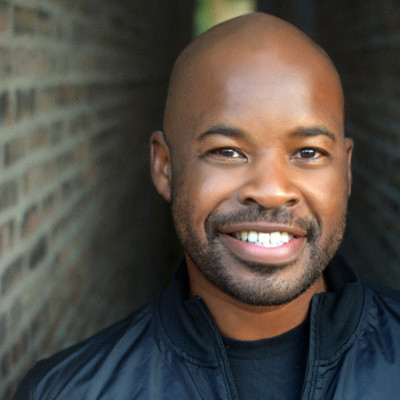Book Club: Stephen Diorio on Aligning the Commercial Model to Drive Growth
2.4K Views | 22 Min Read
Olivia Fuller: Hi, and welcome to Book Club, a Sales Enablement PRO podcast. I’m Olivia Fuller. Sales enablement is a constantly evolving space and we’re here to help professionals stay up to date on the latest trends and best practices, so they can be more effective in their jobs.
As sales becomes increasingly data-driven and digital, it also becomes more complex. As a result, buyer expectations are evolving and organizations need to adapt to a modern commercial model in order to accelerate revenue. This is a concept that Stephen Diorio and his team at the Revenue Enablement Institute explore in-depth in their research. Today, he’s here to talk to us a little bit more about some of the key findings of this research and their upcoming book.
Stephen, with that, I’d love if you could tell us a little bit more about yourself and your organization.
Stephen Diorio: Great. Thanks for having me. I’m an engineer, I grew up in the factory at GE, and so I’m all about the science of growth. Since 1985, I’ve been trying to drive the continuous improvement of sales and marketing performance and transformation at the enterprise level. I built a consulting firm named MarketBridge that was able to transform a number of companies like IBM. I was the first sales and marketing analyst at Gartner group back in 1998. Through all of this, I had a full head of hair, which you can’t see. And I was an investor and board member in terms of sales tech.
For the last decade, I figured out something that probably your audience understands. Transformation comes from the top. I’ve never met a sales enablement professional who didn’t know what to do. The other question was, did their CEO know what to do and were they committed to doing the things from the top down to transform the commercial model. As a by-product of all that we’ve wrote a book, and the book is about revenue operations. We’ll talk more about that. But the business reason for writing the book is to educate boards, CEOs, and what we call CXOs – that’s the top growth leader in the company. It can be a sales executive, but it’s more than likely a CEO or somebody with a broader remit.
Three big reasons we wrote the book: one, organic growth and importantly, the assets that created brands, data, technology, channels are directly linked. Two, firm value – your stock price or the bio of your firm and financial performance margins and profits and cash flow. The problem is what we’re seeing in organizations is businesses are trying to manage a 21st century commercial model that’s digital, data-driven, dynamic, and accountable, meaning you have to demonstrate results with management practices and structures invented in the last century. What we’ve done is help owners, CEOs, and the CXOs to remake their commercial models to be more digital, data-driven, accountable, and higher performing.
We’ve forwarded this notion of revenue operations, and you and I can talk. There’s a lot of definitions, but we’re publishing a book. We’ve built a blueprint and we’ve outlined an operating system for getting all the assets in your organization working together around aligning them to drive more growth. That’s the reason we wrote the book, and we can talk a little bit more about what that means and why your audience might be able to use some of these principles in their day-to-day.
OF: Fantastic. Well, again, I’m so excited to have you here with us today.
As you mentioned, your team recently published some comprehensive research on revenue operations in a 21st-century commercial model. That really details how revenue operations can better align with commercial teams and processes to help accelerate revenue growth. At a high level, I’d love if you could just tell our audience what the key components of that model are.
SD: Absolutely. We’ve assembled the leading academics, practitioners, and experts in the science of growth. What a CEO will typically say is this is about the people, process, and technology of growth. That all comes down to alignment: aligning teams, aligning operations, aligning systems. One thing we’ll talk about that’s very important is aligning processes. No single person owns the cross-functional commercial processes.
And this notion of assets – what’s really important in this day and age in the 21st century, the assets that support growth. By that, I mean customer data or your brand or your digital selling infrastructure or your sales technology stack or whatever IP you have is probably worth most or more than most of your company. For example, the customer data inside American Airlines is worth more than the actual company according to a bank that financed them. They like to say, we’d have a great data business if we get rid of the planes.
What that boils down to is there are six things that are needed. Two will be very familiar to our audience. One is commercial enablement, the technologies that support data-driven selling and training. And the other would be commercial insights, where I know a lot of operations professionals and enablement professionals are involved. The big other four are commercial leadership, the notion of a CXO, which is not a buzzword but really somebody with a broad remit to unify sales, marketing, and services to do top-down transformation to make the business more data-driven digital and accountable. The second thing is commercial operations. We’ll talk more about this but think about it. We need a single point of control for the cross-functional commercial processes for all the operations and data inside the company. Fragmented management of these assets hurt our ability to plug the gaps in the journey where bad things are happening, or to really truly leverage the value of data in our business.
The other one is commercial architecture. The world is constantly moving. If you read the Gartner research or any customer research, 82% of the buying process is digital. People want faster and more complete and relevant answers. In the last 24 months, we’ve learned that people don’t really want to travel. The engagement model has changed. Coverage models have changed. I’m sure everybody in this audience have added development reps at the front of the process, specialists and overlays in the middle of the process, and customer success at the back of the process.
When you factor in all those changes, the way we compete and cover assigned territories is probably obsolete, even if it’s over the last nine months. Aligning your coverage and resources around a modern model in employing digital engagement and different cadences can have a 50% impact on top-line growth and a 10% cost of sale impact.
The six components, and we have a blueprint we can share, are leadership, operations, architecture, enablement insights, and this notion of assets, technology, data, and content that drive growth. Managing those in a unified fashion is really what revenue operations is all about.
OF: Definitely. How can enablement and revenue operations partner together and really complement each other to drive that alignment across revenue-facing teams?
SD: Yeah, so this is great. Someone’s going to put a big CRO title on top of the organization and that’ll either have beef and substance or it won’t. But if I’m in an enablement or operations roles, that’s kind of fuzzy math there. Enablement in one organization is operations in another. But if you think broadly, sales enablement needs to be working with sales ops because sales enablement, technology and engagement, technology and readiness, or training technology are all connected into the same stack. So how can we manage those things separately?
Second, the difference between marketing operations and sales operations in a world where you have all these BDRs and development reps at the front of the process, driving all the way through, is blurring. The tech stack should be different. The data signals that marketing creates are incredibly useful to salespeople, so they should be partnering. I know there are specialty people who just do CPQ and tools and fulfillment, but at the end of the day, if I’m in an enablement or operations function, I want to be working together with one single view of the process and make sure that the systems and data align along that process. You don’t need a mandate from the top to do that. It’s common sense, and you’ll create financial impact. There’s plenty of things that an enablement organization can be doing to lead their leadership down that path.
OF: I’d like to dig in a little bit to what some of the risks are with not having a well-managed commercial model. Can you tell us, what are some of the costs of having a poorly managed commercial model and how can misalignment across commercial teams really hinder growth?
SD: That starts at the top with firm value. If you’re in one of these hyper-growth businesses, the average SaaS business has to be growing at 50% with really strong retention to support their stock price. We see leaky buckets, consumer attrition with acquisition at the front, but another big cost I think to the board is opportunity costs. So many businesses have so many attractive markets that are out there. A lot of these businesses are getting funded because of the addressable market, but if you cannot attain that market and gain share of that market, you’ve got a problem.
Quite frankly, alignment of resources to that opportunity is a big point of failure. Cost to sell is an obvious one. Organizations that aren’t aligned are at least 10 percentage points off on cost to sell market margin. Leakage is another big one. Margin leaks out throughout the journey in terms of lead leakage, price leakage, price compliance. Margin is bleeding out of the cracks in a fragmented organization because of handoffs or lack of ownership. That’s an easy one to go after.
Then, this notion of return on assets. Adoption, utilization, and return of selling technologies is incredibly low. It’s 30 years after the advent of CRM, and I think organizations need to be looking at the return they’re getting on these assets. A small bump in adoption will lead to much higher returns on some of the enablement technologies you were talking about before.
OF: Then on the other side, there are a lot of benefits to having that well-managed commercial model. One of those values is cross-functional alignment. And you mentioned that in the research and the impact on the customer experience as a result. So, from your perspective, what does it mean to have a unified customer experience and how is that really a competitive advantage?
SD: First, very few CEOs can turn to one person in their organization to say what happened at the front, middle, or the back end of the customer sales journey. Whether that’s a proxy person, whether that’s a hard line, we need one throat to choke for the entire cross-functional commercial journey across the organization.
The second thing is visibility into what we call the moments that matter. If you listen to my friend Brent Adamson at Gartner, only 18% of the B2B buying process involves humans. That means that less than 20% of the time, I have the ability to impact. Those conversations are more and more important. Real-time, conversational intelligence and guidance is critical to make sure that we’re saying the right things in those moments, we’re listening to the right trigger words, and we’re monitoring the customer experience.
The third thing is ensuring complete and relevant answers to customer questions. Customers don’t care if they’re talking to a BDR or product specialist or a CSM, they want a complete relevant answer in real-time. Again, this notion of speed is really coming through.
Lastly, you’ve really got to understand the key points of failure, leverage, and scale in the process and measure and manage them. Every organization has leakage, bad handling, bad setups, bad customer experiences, bad opening experiences. Putting them on a board and owning them and measuring them is critical. I’d say focus on those four things.
OF: Definitely. Having advanced analytics to provide data-driven sales guidance is becoming more and more critical for organizations to really be able to grow and scale. How can revenue operations and sales enablement help gather and provide those insights?
SD: This is really important piece for alignment. Alignment in two dimensions. Typically to deliver guidance, we’re dealing with a tech stack of four or five different systems or panes of glass that are managed by four or five different types of people. Second, there’s a convergence going on. Sales enablement technologies are merging with sales readiness technologies. We’ve seen two acquisitions in the last week. More importantly, they’re going to connect to sales engagement technologies in terms of speed.
Right now, someone’s got to look past the different categories that the analysts are talking about and look at three things. There are three core food groups in terms of customer engagement data. One is CRM. That’s obvious. Two is email and calendar data. People can generally grab this. All this data exists in almost every organization. A third is external buying signals. These are first-party signals coming from your website that people in marketing aren’t sharing. Fourth is seller activity data. This is conversational intelligence, recording calls, that type of thing. Then, customer engagement data, how they are responding. Every single organization, if you send people content, most sales enablement solutions can tell you whether that content was consumed or moved around. Content is like a tracer bullet. It flies around your customer’s organizations and shows you what’s going on. Everybody is recording Zoom calls nowadays. But that data’s got to be combined with signals that you’re getting on your website, email, calendar, and CRM. Those are the five food groups. If any CEO had the will, they should be able to harness that data.
The second is analytics that you need to combine all of those things. It’s conversational intelligence. People can take just the call and derive certain conclusions from that, but it’s possible to take all five of those to create a complete picture of what’s going on and you want to do five things there. One, prioritize opportunities. In real-time in the call, recommend the next best play. In real-time in the call, do one-to-one coaching at scale. This is really cool. People can get an alert saying, “oh, a sales call is happening right now. Here’s the recording.” It’s even better to say your sales rep just said something really, really stupid. You better drop in on that call. It’s a teachable moment and an account save. Then real-time seller guidance, saying, “oh my gosh, the client just asked her trigger word. They’d mentioned a competitor. They mentioned something to go after.” Rather than wait until after, you should be doing that through the call.
Then, I’d love to talk about four measures. You should be deriving measures to run your business on pipeline account health and opportunity health on a scale of one to 10 all from engagement data. I talked about the five food groups, using analytics to drive five growth drivers. This sounds complicated, but my understanding of the stack and most of the companies in this call, this is very doable in a 60 to 98-day timeframe with existing technologies. If an enablement provider can’t do this, then you should be demanding this sort of thing.
OF: Absolutely. This has been a fantastic conversation, Stephen, and I just have one final question for you. What are some of the analytics that practitioners really should be tracking and leveraging to empower revenue growth and scalability today?
SD: Yes, absolutely. The big trap here, and I think most people on this podcast know that, is everyone goes after a bag of metrics, everyone measures what their machines can generate. But the scorecard for sales enablement should be firm value and financial performance: revenue growth, profit growth, and cash flow.
If you walk back from what is creating revenue and profits, you’ll come with big four metrics. One, account health as measured by customer lifetime value and actions that are making that go up and down. Second is opportunity potential based on a propensity to buy, buying signals, firmographics, demographics. You should have a pretty hard number that says Account A is worth $10 million, Account B is worth $200,000, and the probability of closing that.
The third is seller performance. Several capacity assumptions, seller productivity assumptions, how well that they’re developing in terms of ramp is critically important. Then, pipeline accuracy. A lot of this is a lot of where the rev ops software companies come into play, but you should be blending many different data sources to get that number as predictable and accurate as possible because garbage in, garbage out.
The big four metrics are: visibility into account health, opportunity potential, seller performance, and pipeline accuracy, at the top of the house. If you take a process perspective, I talked a lot about measuring the key points of failure and leverage in the end-to-end process. You should be using this customer engagement data, these five food groups, to measure those things. That’s a basic thing. Are the plays that work being executed? Sales organizations know what they’re doing. If there’s a hundred sales reps running the right plays – and again, I’m using plays broadly – here are the people running the plays that work. That’s pretty simple.
Second, most of our energy goes into training and development. A lot of that leaks out of people’s ears because of human nature. In 90 days, ask yourself the question, “is the training changing sales behaviors in ways that are changing buyer outcomes?” So many people are pumping energy into training, assuming it’s the right thing. It is the right thing, but are we using this data, this customer engagement and seller activity data, to tell us half the people did it and of those people, their customers are converting more. These are pretty granular metrics, but if you think about the four things that are driving firm value and the key points of leverage in the end-to-end to commercial metrics, you’ll be coming up with really useful analytics.
OF: That’s excellent advice. Well, Stephen, thank you so much again for joining the podcast today. I learned so much from you and I can’t wait to share this with our audience.
SD: Thank you so much.
OF: To our audience, thanks for listening. For more insights, tips, and expertise from sales enablement leaders, visit salesenablement.pro. If there’s something you’d like to share or a topic you’d like to learn more about, please let us know. We’d love to hear from you.













